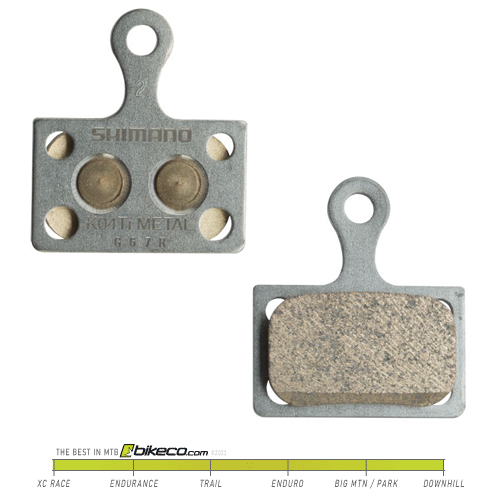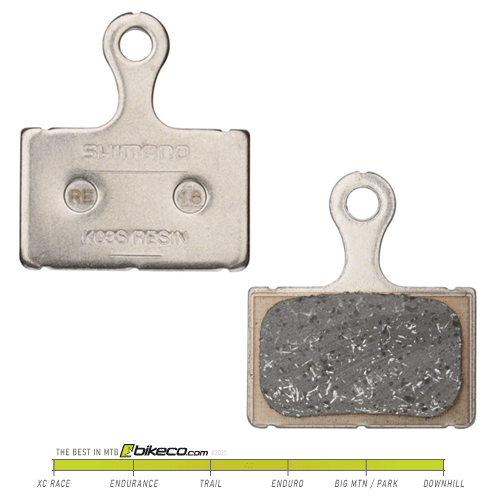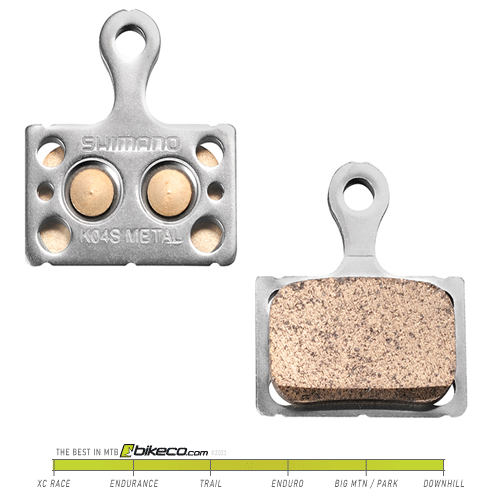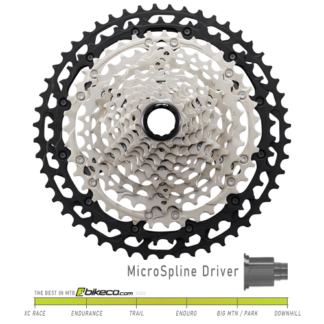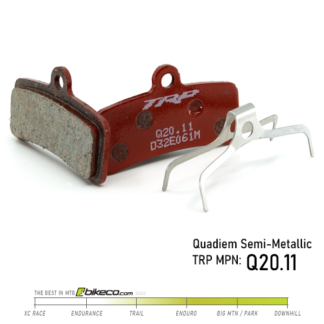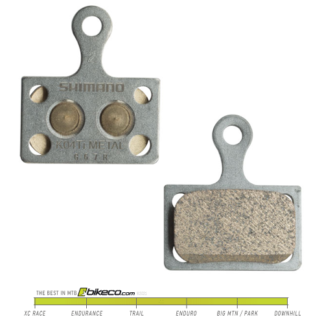Description

Shimano K04Ti Metal Pad with Titanium backer
UPC: 689228694675
PRODUCT CODE: Y8PU98020
Sintered Metal pad with consistent, high stopping power in wet or dry conditions and excellent durability
Titanium backing plate for light weight and improved heat insulation

Shimano K04S Metal Pads
UPC: 689228383739
PRODUCT CODE: Y8N398020
Sintered Metal pad with consistent, high stopping power in wet or dry conditions and excellent durability
Ventilated steel backing plate for improved heat dispersion

Shimano K03S Resin Pad with Fins
UPC: 192790451732
PRODUCT CODE: Y8Y898010
Less noise than Metal pads

Shimano K04Ti, K04S and K03S Compatibility
Compatible with Shimano 2 piston brakes including:
XTR BR-M9100
BR-M9170, BR-M8070, BR-M7070, BR-M470, BR-RS805, BR-RS505, BR-RS405, BR-RS305, BR-U5000, BR-RX810, BR-RX400

XTR 9000 vs XTR 9100
The XTR 9100 Race brakes use the K04Ti, K04S or K03S brakes on this page.
XTR 9000 and XTR 9020 brakes use the pads linked below.
Other Shimano 2 Piston Brake Pads
Shimano XTR M9000, XTR M9020, XT M8100, XT M8000, SLX M7100 and SLX M7000 use G03A, G03S, G04S and G04Ti non-finned options or the J03A or J04C finned pads.
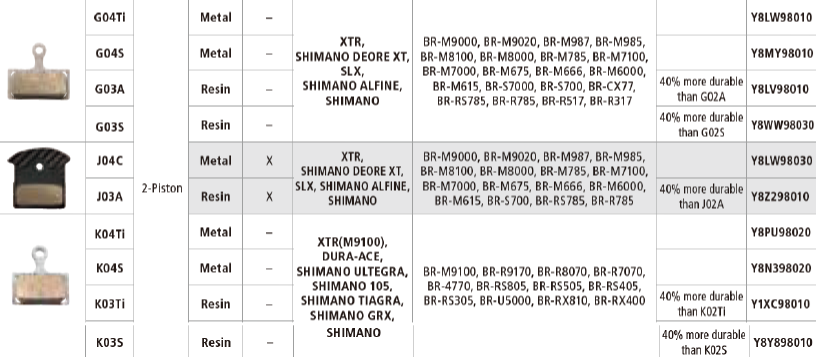
Do You Need To Replace Your Rotors As Well?
The nature of brake pad and rotor interface means they will wear together. Ideally you will be able to replace your brake pads a few times before you need to replace your rotors. however there can be some conditions that make it necessary to replace the rotors sooner. Let’s look at a few.
Rotor Wear:
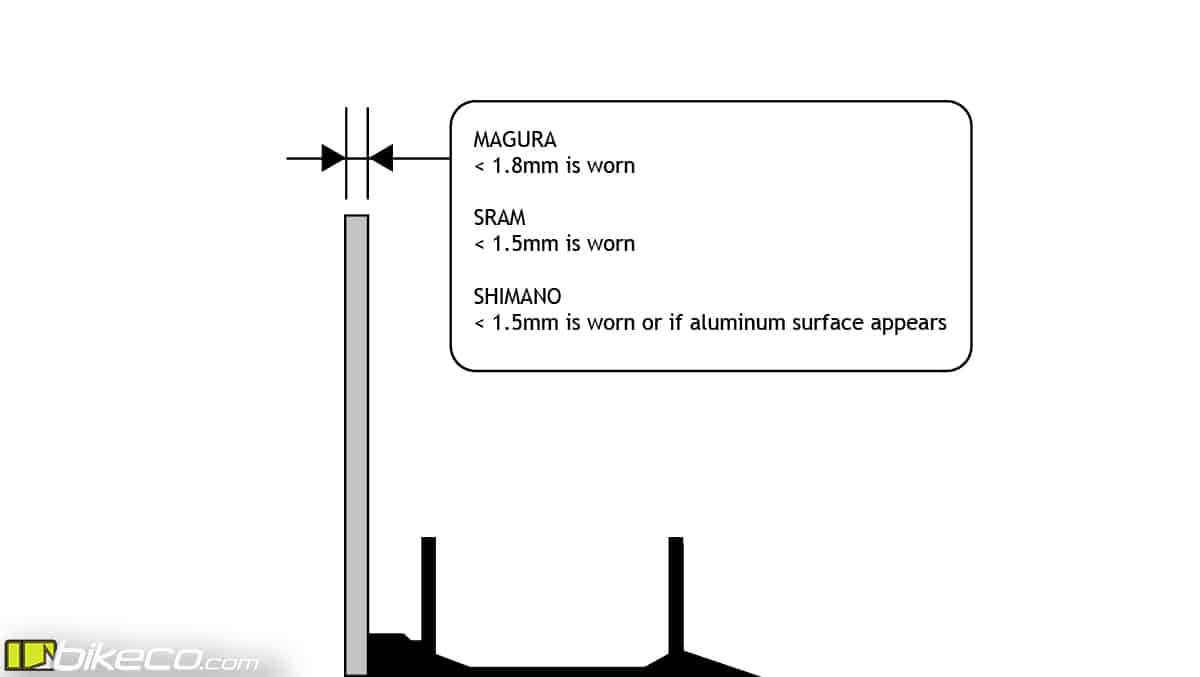
The easiest thing to check is the rotor wear limit.
A Magura rotor that is less than 1.8mm wide is considered worn. SRAM rotors less than 1.5mm are worn. Shimano rotors less than 1.5mm or if any of the aluminum “Ice-Tech” material appears are considered worn.
Running too thin of a rotor will compromise brake bite as well as heat capacity. In extreme cases it can lead to rotor separation which will cause damage and potentially severe injury.
Rotor Shape:
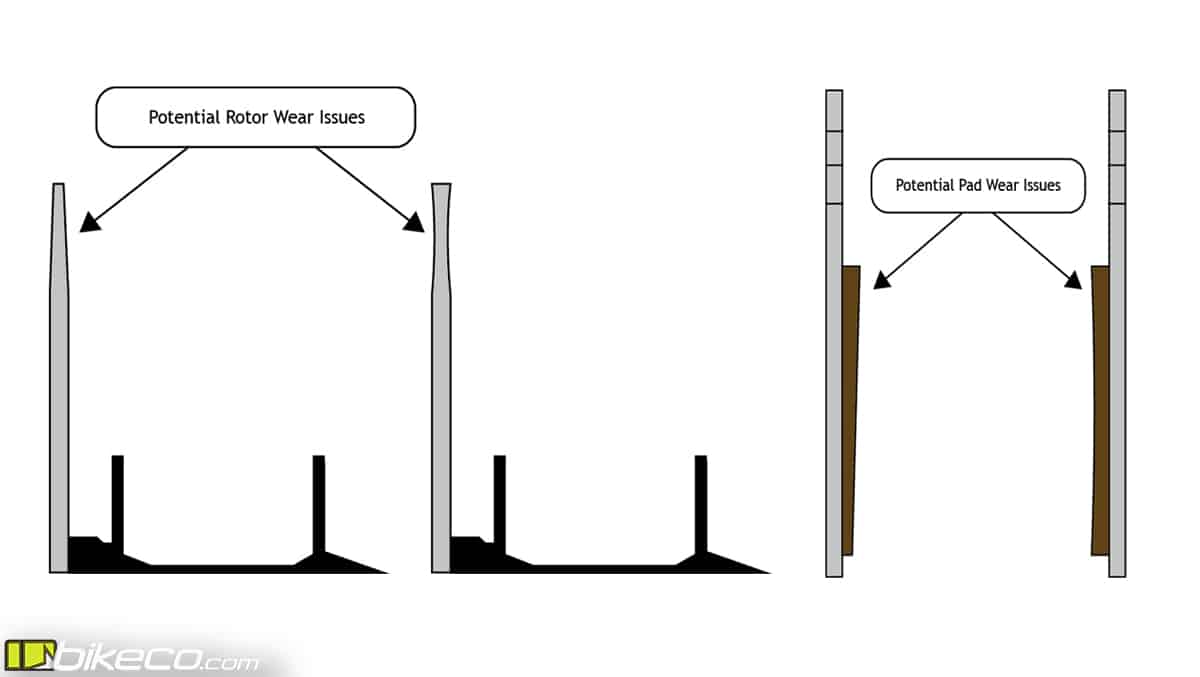
If the previous pads have worn shapes into the rotor your performance will be compromised. Whether the rotor shows knife edge, bulge or convex anything but parallel surfaces will cause contact patch issues.
These issues will create extreme “hot-spots” on the new brake pads which, in some conditions, can super heat the pad – glazing it and compromising the friction coefficient (bite, power, heat capacity are all effected).
We have seen cases where new brake pads become unusable due to this severe heat modifying the pad’s makeup glazing not just the contact surfaces but essentially glazing the entire pad material.
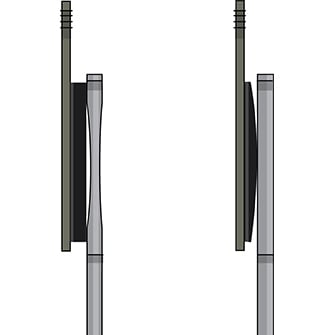
A rule of thumb is rotors should be replaced about every three or four sets of pads. It will pay dividends to check the rotor’s condition before installing new pads!

